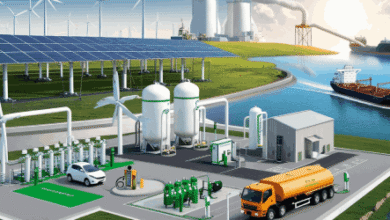India’s solar power boom — A 3450% leap changing the nation’s energy future
In just ten years, India has transformed its solar power sector from a modest beginning into a global success story. In 2014, the country had only 2.82 gigawatts (GW) of installed solar capacity. By 2025, that number is expected to soar to 100 GW — marking an astonishing 3450% increase. This dramatic rise isn’t just about numbers; it represents a bold national vision, strong policy direction, and a commitment to sustainable development. As India positions itself as a world leader in clean energy, its solar journey serves as a powerful example of how innovation, cooperation, and determination can reshape the future of energy.

India’s solar power sector has gone through a massive transformation in just a decade. In 2014, the country had only 2.82 gigawatts (GW) of installed solar capacity. By 2025, that number is expected to reach 100 GW — a stunning 3450% increase. This remarkable growth has turned India into one of the world’s leading solar energy hubs and a key player in the global clean energy movement.
This success didn’t happen by chance. In 2014, India launched the National Solar Mission with a clear goal: shift the country toward clean, renewable energy. Over the years, governments raised their targets again and again, showing strong commitment to sustainability and reducing carbon emissions.
The rapid progress has been made possible by close cooperation between government bodies, private companies, financial institutions, and global partners. It’s a clear example of how smart policies and market opportunities can work together to build a strong and sustainable energy future.
A big part of India’s solar growth comes from large-scale solar parks built in states like Rajasthan, Gujarat, Karnataka, and Andhra Pradesh. These parks have turned dry, unused land into powerful sources of clean energy.
For example, the Pavagada Solar Park in Karnataka — one of the largest in the world — generates over 2 GW of electricity. These parks also create jobs, attract foreign investment, and help local communities grow economically.
To support all this, India has also worked hard to expand its power grid and storage systems, ensuring that solar power remains reliable and available across the country.
It’s not just big projects that are making a difference. Rooftop solar systems have become common in both cities and villages, helping homes, schools, hospitals, and small businesses get affordable electricity.
In areas with poor grid access, solar-powered microgrids are now providing light, running water pumps, and powering basic services — changing lives in remote communities.
Businesses are also using solar to cut costs and meet environmental goals. From factories and tech parks to malls and airports, solar panels are becoming a standard part of modern infrastructure.
The solar boom has been great for the economy. Billions of dollars in investments have flowed into India’s solar sector from both local and international players. This has created a dynamic market for developers, manufacturers, and financial backers.
At the same time, the solar industry has created hundreds of thousands of jobs — from engineers and technicians to workers in manufacturing and installation. The government’s push to grow local production of solar panels and parts is also helping reduce dependence on imports and encouraging innovation.
India’s solar progress is also making an impact globally. As a founding member of the International Solar Alliance (ISA), India is helping over 100 countries — especially developing ones — work together on solar solutions.
Through this platform, India is sharing technology, knowledge, and financial support to help other nations move toward clean energy. Its own experience has become a model of how bold goals and collaboration can create rapid change.
By 2025, India will hit 100 GW of solar capacity — but it doesn’t stop there. The country aims to reach 500 GW of non-fossil fuel energy by 2030, in line with the Paris Agreement and its climate goals.
Solar energy will continue to play a leading role, supported by new technologies like energy storage, green hydrogen, and modern power grids. With falling costs and rising innovation, solar is set to become the backbone of India’s energy system.
India’s solar journey is an inspiring story of what’s possible when ambition, innovation, and teamwork come together. From less than 3 GW in 2014 to 100 GW by 2025, the growth has been extraordinary.
This transformation is not just about energy — it’s about improving lives, protecting the planet, and showing the world that a cleaner, more sustainable future is within reach.















